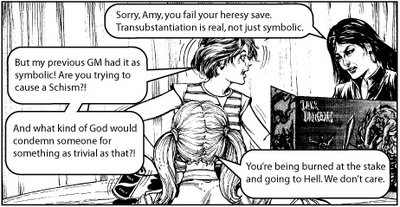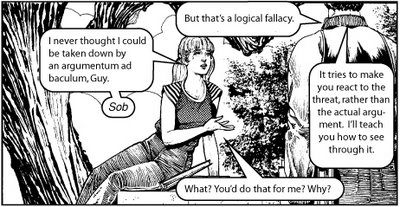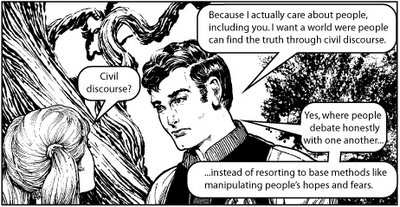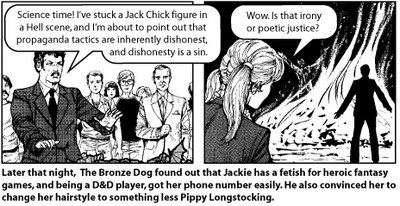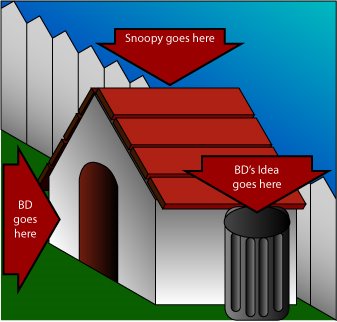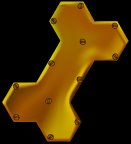
Welcome to one series I've been thinking of for a while. The inspiration was
Skepticality's "Whimiscality" on the
number five. I'll be rambling on my favorite two-dimensional shape: The hexagon. For those of you who've fallen behind on your geometry, the hexagon is a six-sided polygon.

A regular hexagon (all sides and angles equal) has all angles at 120 degrees. Because of this, three hexagons can join together at a common vertex seamlessly, since 120 x 3 = 360. Thanks to this little property, you can form a mosaic of hexagons known as a tessellation. The only other regular polygons that can do this are the triangle and the square.
Unlike the square and the triangle, there are no
platonic solids made of hexagons. Hexagons, however, do commonly find themselves in
archimedean solids, including one of the most simple:

The truncated tetrahedron, which is essentially a tetrahedron with the points cut off. The hexagon is also a part of the archimedean solid known as the
truncated icosahedron, also known as the
buckyball, named after
Richard Buckminster Fuller, who had a great enthusiasm for the shape. Buckminsterfullerene, a buckyball-shaped carbon molecule, along with other molecules of its sort, seems to have a lot of research potential.
Fullerenes have a number of unusual properties, including being the only known
allotropes of carbon that can be dissolved.
Returning to hexagonal tessellations, graphite, another carbon allotrope, takes on the form of sheets of hexagons, weakly bonded with each other. Another carbon form is the
benzene ring, a hexagon of carbon atoms with other atoms, usually hydrogen, bonded to the available verticies.
No entry on the hexagon would be complete without mentioning honeycombs, the basic units of a beehive. Bees likely evolved to form hexagonal honeycombs because they were the most effiencient use of space while retaining strength.
Oddly, France is sometimes nicknamed "
l'hexagone" because, with a little imagination, the nation can be seen as a hexagon.
On a more personal note, hexagonal grids are often favored in some role-playing and strategy games: Distances on a hex grid are constant between two points: There's no need to deal with diagonals.


